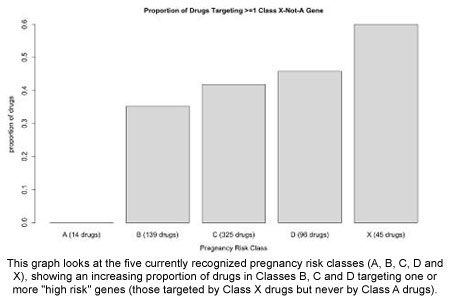Preventing birth defects may now be possible, thanks to the following discovery. Scientists from the Children’s Hospital Boston Informatics Program (CHIP) have introduced a model for predicting a drug’s capability to cause fetal malformations. The model seemingly employs bioinformatics and public databases to profile 619 drugs assigned in the pregnancy risk class, and whose target genes or proteins are known.
The research focused on detecting genes involved in biological processes of fetal development including ‘genesis,’ ‘develop,’ ‘differentiate’ or ‘growth.’ Drugs targeting a large proportion of genes related to fetal development probably are at a higher risk of facing defects. On the basis of developmental gene profile, experts designed a model revealing 79 percent accuracy in predicting whether a drug would be in Class A (safest) or Class X (known teratogen). When applied to drugs across all risk classes, the proportion of developmental genes target supposedly matched the degree of known risk.
It was mentioned that validating the results of this model is a major complication and teratogenic effects may be difficult to spot on. The predictive model of drug risk for birth defects appears extremely vital in the health world. Asher Schachter, MD, MMSc, MS, and colleagues will be undertaking further investigations to affirm the ability of this model.
The research was published online in November and will appear in the March 2011 issue of Reproductive Toxicology.

